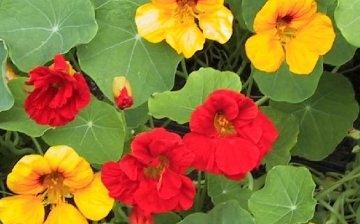We study the cultivation of nasturtium step by step
What makes nasturtium cultivation different? This plant is considered unpretentious. He is loved for its variety and good looks.
How to grow nasturtium
This unusual plant is much more interesting than people think. The name comes from the Latin concept "trophae" - a small trophy. This association appeared due to the helmet-like shape of some parts of the flower, and it also has spherical leaves.
The plant is really diverse. The genus has about 50 species, they originated in South and Central America. What characterizes the flower and what is important to know when planting?
- Nasturtium is photophilous, organize open sunny areas for it, and then the flowering will come very abundant;
- Also, nasturtium loves warmth. She needs the sun's rays. She may not tolerate frost;
- For it, light drained soils of the "loamy" or "sandy loam" category are selected, they must be rich in humus, and they are not fertilized with manure;
- If nitrogen is given to the plant in excess, there will be many leaves, and this is to the detriment of flowers, there will be fewer of them;
- Frequent watering is not needed, it is better to make sure that they are abundant, and the earth should have time to dry out;
- If it seems to you that the plant has lost its decorative effect - see if the watering is too poor;
- It is also convenient to propagate nasturtium by seeds, they are sown directly into the ground from mid-May, or they are planted without diving.
These are the main points in growing petunias. Since they come in different varieties, they are grown in different ways. For example, climbing plants need large areas, and bush plants are planted more densely. This is how the cultivation of nasturtium is carried out.



